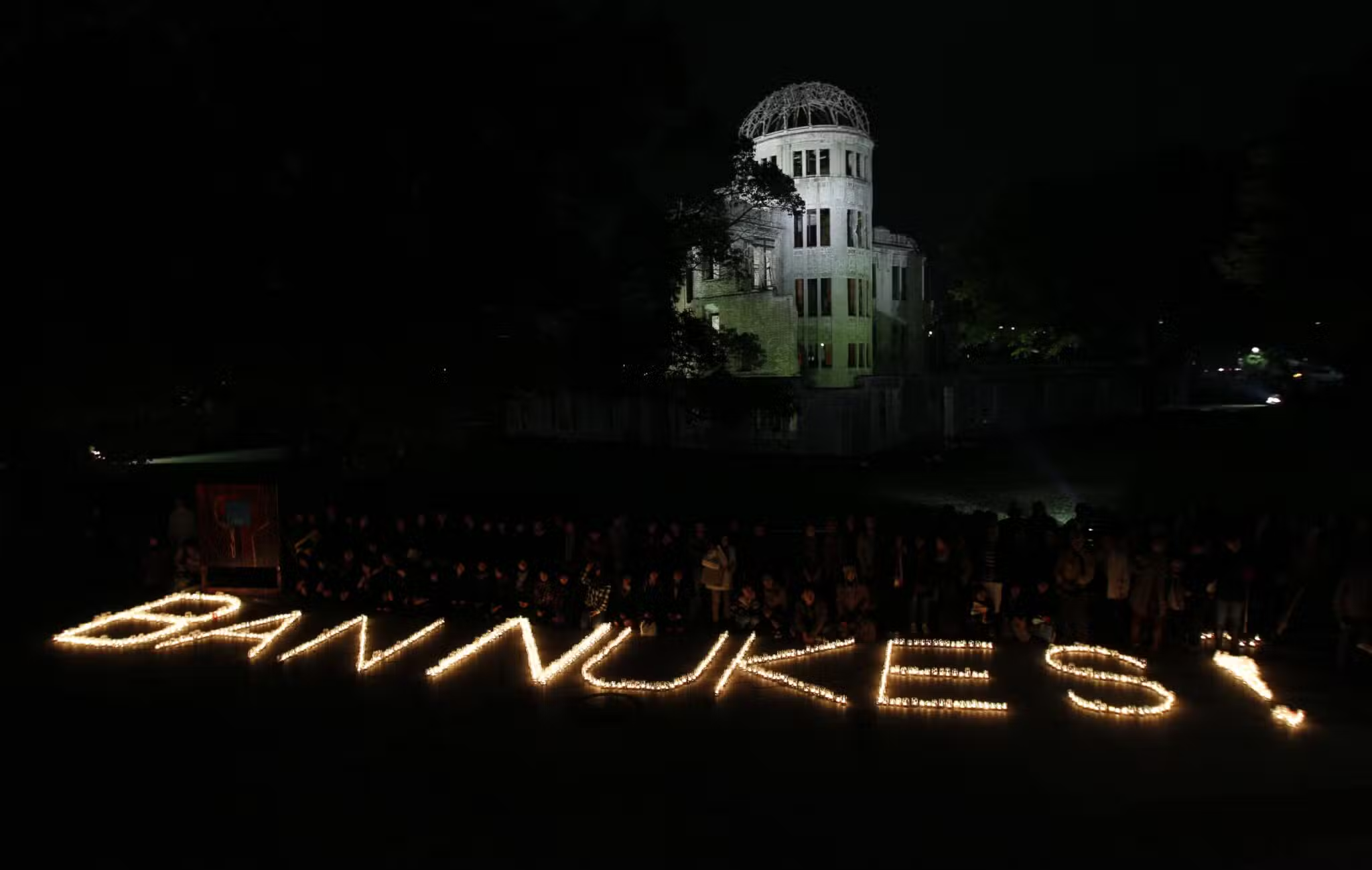A Franciscan friar and medical ethicist, Father Thomas Nairn helps us understand these hot-button issues and how to address them.
So what does a Franciscan friar know about the top five issues facing the health-care system in the United States? Plenty, if he’s Franciscan Father Thomas Nairn, minister provincial of the Sacred Heart Province of the Order of Friars Minor. He spent 25 years as a consultant to a Catholic health system in Chicago and a decade as the senior director for theology and ethics at the Catholic Health Association before being elected provincial in the summer of 2017.
With a doctorate from the University of Chicago’s Divinity School, four books on medical ethics along with countless essays in scholarly and secular journals, numerous teaching positions throughout the United States, and as a Vatican-appointed assistant to the International Catholic Committee for Nurses and Medical Workers, Father Nairn can speak on health care—and does.
He calls the Catholic Health Association—the largest group of nonprofit health-care providers in the US—”the best of corporate America and the best of Catholicism.” His work as an ethics consultant has taken him around the world and into hospital boardrooms where the nitty-gritty decisions are made, such as whether to treat an immigrant without insurance who needs a bone marrow transplant and how that decision would affect the institution.
The depth and breadth of his experience as a Franciscan ethicist make him uniquely qualified to identify the top five health-care issues facing the Catholic Church.
1. The Affordable Care Act
Dubbed “Obamacare,” the Patient Protection and Affordable Care Act (ACA) became law in March 2010 and the major parts were implemented in 2014. Within Catholic health care, there have been objections to the ACA, especially by many US Catholic bishops.
First, the positives. “The ACA did bring health-care insurance to the poor,” says Father Nairn. “One of the things the Catholic Health Association was very concerned about is that a significant number of bankruptcies were because of unexpected health-care needs, especially with poor families. It was devastating.
“What the ACA was able to do was stabilize that situation; create a situation where more people in this country were insured than ever before,” he says. “That had some very positive effects.” The bishops, however, took issue with other aspects of the ACA, particularly concerning abortion and birth control. “The first one was how the ACA was structured. It didn’t change anything regarding abortion. While the government would not pay for abortion and while the government said that in every state there had to be at least one insurer that would not offer abortion, abortion was still offered within insurance companies as part of the ACA,” says Father Nairn.
“Second was the so-called ‘contraceptive mandate’ for Catholic health care, Catholic universities, everything other than actual churches, ” he says. Third, the ACA failed to provide access to health care to immigrants. For these reasons, the US bishops could not embrace the ACA.
At the same time, under President Donald Trump, “The bishops have been against his trying to destroy the ACA without having something in its place,” he observes. “So interestingly, although they were not in favor of ACA, they are also nervous, because of the number of people insured, that it will simply go back to where it used to be.”
2. Eldercare
According to a May 2018 report from the Centers for Disease Control and Prevention’s National Center for Health Statistics, the US birth rate fell to a 30-year low in 2017. “This country is aging because fewer and fewer Americans are being born, and more and more Americans are living longer,” says Father Nairn. Those 90 and older are the fastest-growing demographic in the United States, he adds.
“This affects all sorts of things ethically,” says Father Nairn. “Sadly, this country has not been very good in respecting its elders. We are sort of a youth-oriented culture. We need to be very respectful of elders; we need to have meaningful lives as we get older.”
Nursing homes have become the way to deal with elderly people, but “sadly, many become abandoned in nursing homes,” he says. “We need to keep people at home as much as possible.” In the US Conference of Catholic Bishops’ document “Ethical and Religious Directives for Catholic Health Care Services,” of which the sixth edition was made available last June at usccb.org, Father Nairn says the bishops “try to tell us eldercare is a joint effort between patients, family, physicians, and nursing care staff. We need to dialogue about what is truly best for a patient at every stage of life, including the end of life.”
End-of-life issues can be complex and, at times, the Church’s teaching can be misunderstood.
The Catholic tradition has been very clear that life is a valuable gift, and we take reasonable care with it, acknowledging the needs of others.
“And so our whole tradition of so-called extraordinary means has to be understood by people, and sadly I don’t think it is. Many people honestly believe that [we’ve] got to do everything we can to keep a person’s heart beating. That’s never been the Catholic Church’s tradition.”
Father Nairn tells the story of a member of his community who was terrified of dialysis, so much so that he would shake as he walked into the unit. The friar asked if he could stop doing dialysis. “Now for most people, it would be considered ordinary and beneficial, not burdensome, but for him, he was so terrified it became burdensome to the extent that he stopped.” He says there’s no way to make a general rule on ordinary versus extraordinary measures because it differs for each patient. In making these decisions, it is important to acknowledge the “disease is killing the patient, not our decision to treat or not treat,” he adds.
3. Conscience Protection
Conscience protection means health-care providers may not be discriminated against for refusing to be involved in or provide coverage for procedures or treatments that go against their religious beliefs, such as abortion or contraception. Father Nairn believes this will be a major issue within the next five years for both health-care professionals and health-care facilities.
“On the one hand is conscience protection for health-care workers—physicians, nurses, social workers, pharmacists, etc.,” he says. “The second is whether we can talk about conscience protection for an institution such as a Catholic hospital.
“Historically, there are about three or four pieces of legislation that helped deal with the issue of conscience, and basically it dealt with the issue of abortion and contraception, wherein physicians and nurses have legal protection if they, in conscience, felt they could not help with abortion or prescribe contraceptives,” he says. Although this began with physicians and nurses, new questions were raised about what a pharmacist or pharmacy would do if the pharmacist does not want to dispense these things. “That has never been resolved,” he says.

Furthermore, he says, “Over the past five years, and it came from the medical heath-care industry itself, people began raising the questions whether that personal conscience conflicted with a physician’s professional duty to give the patient what the patient wanted, and again especially regarding reproductive issues, contraception, abortion.” Father Nairn adds: “Several philosophical health-care ethicists began raising the question of when professional duty trumps one’s personal conscience. That has not been resolved either.
“So you have a group of ethicists who are saying we have to respect individual consciences, including the conscience of an institution; [and] another group of health-care ethicists, philosophical usually, not theological, are saying we have to acknowledge professional duty and that is the important thing,” he says. “We’re right now in sort of an uneasy truce, but I think it’s going to erupt again soon.”
Pope Francis addressed a delegation from the World Federation of Catholic Medical Associations in May 2018. He urged them to defend the right of conscientious objection for health-care workers. “It is not acceptable that your role be reduced to that of being a simple executor of the will of those who are ill or of the demands of the health-care system in which you work,” he said.
4. Immigration
“Immigration and health care—this is, to me, a sad issue,” Father Nairn says. “Most immigrants coming to this country, especially those from Latin America, are healthier than most Americans,” he says. “The difficulty is that we have this law—it’s been on the books since 1996—that the government will not help them with their health care for five years. By the time the five years [go by], they are sicker than most Americans. Why? Because they have not had access to health care.”
Father Nairn says it would be in the best interest of the United States to “be much more generous and, in the long run, we would save money.” He acknowledged the difficulty for that to happen in the current political climate. “Sadly, immigrants are being vilified. Our own Catholic tradition says we need to welcome the stranger and the alien.”
“I think religiously, ethically, and—interestingly—practically and financially, to have a more compassionate attitude toward immigrants would be in the best interest of all, not only the immigrants but the rest of us as well.”
5. Physician-Assisted Suicide
Physician-assisted suicide is legal in Washington, DC, and seven states: California, Colorado, Hawaii, Montana, Oregon, Vermont, and Washington.
Father Nairn says an attempt to legalize it was done much the way that abortion was legalized in the 1970s, by taking it to the US Supreme Court. “The argument was that to prohibit assisted suicide was against the 14th Amendment, the equal protection clause,” he says. Proponents of physician-assisted suicide argued that if patients have a disease that, left untreated, would kill them, they have the right not to be treated and, therefore, die. Under the 14th Amendment argument, then why wouldn’t patients with a terminal disease—that is not killing them at the present time—have the right to proactively end their life by use of technology, injection, or pills?
“The Supreme Court rejected this argument but did allow states to decide,” says Father Nairn. He points out that many proponents of physician-assisted suicide prefer to call it “medical aid in dying,” a more neutral term because the word suicide makes them “nervous.”
“The Catholic Church obviously has opposed assisted suicide, acknowledging that we simply don’t have the right to kill ourselves,” he says. He believes there has been limited success in Catholics trying to oppose it. In Massachusetts, for example, an attempt was made to get a referendum on assisted suicide. Polls showed two-thirds of people supported it. “That law was not well-written,” says Father Nairn. “And what the Church was able to do was show the flaws in that particular law, and it was narrowly defeated.”
He says the Church did not couch it as a Catholic issue, but instead found allies in other communities. “The coalition building became a way that this was stopped,” he says, adding that he believes that is the “only way this can work.” During its 2017 session, the Maryland General Assembly considered a bill allowing physician-assisted suicide—the “Death with Dignity Act.” Disability-rights advocates joined the coalition against the measure, including former NFL linebacker O.J. Brigance, who has ALS and relies on a computerized voice to communicate. He gave powerful testimony against it in 2015. It was never brought to a vote in 2017.
However, Father Nairn isn’t optimistic about stemming the tide in favor of assisted suicide, and he expects more states to pass legislation allowing it. “What Catholic health care needs to do and has done is ultimately show that it is not necessary,” he says. “If we are against assisted suicide, we need to show that we will not abandon patients at the end of life. We need to show that patients will be kept as pain-free as possible.”
Ten or 15 years ago, the physician-assisted suicide movement focused on intractable pain. Today, fewer than 25 percent of patients who want physician-assisted suicide give pain as a reason, Father Nairn says. “Pain management is much better today than it was even eight to 10 years ago,” he says. “So to keep a patient pain-free is possible.”
He says the two major reasons proponents give are “autonomy—’It’s my right and I should be able to choose it if I want to’—and secondly, ‘I don’t want to be a burden to my family.’ If we as Catholics want to show people that assisted suicide is not the answer, those are the questions we have to answer.
“I think we’ve shown well [through] palliative care that the pain issue does not have to be an issue. Secondly, that people in their old age or in illness are not a burden to family, or perhaps even better, that as Christians we bear one another’s burdens. Thirdly, that while people might have a right under the law to assisted suicide, is that really the best way to end one’s life? Are there things that other people might need to learn from us even as we approach death, that we are basically robbing them [of], by short-circuiting the process?”
As individuals, health-care institutions, and governments continue to wrestle with these issues, the Catholic Church offers much-needed perspective and values. As provincial, Father Nairn will continue to add his voice, bringing his expertise as a medical ethicist and his Franciscan values to the discussion.
“Our mission is to permeate our society with Gospel values,” Father Nairn says. “We are to be instruments of change and heralds of peace in a broken world, serving all people, especially the poor and marginalized, through reconciliation and healing.”
For Catholic Health-Care Systems, the Prognosis Looks Good
WHEN LOOKING AT THE FUTURE of Catholic health care, Father Nairn believes Catholic hospitals might fare better than their secular counterparts by drawing on the mission and values that have anchored them throughout their history.
“When Catholic hospitals began, they were places for the poor, Mother [Frances Xavier] Cabrini being one of the major ones behind that,” says Father Nairn. “It was a place where immigrants could feel comfortable going.” Now a saint, the Italian-born nun began her ministry in the United States when she founded two hospitals in New York City in the late 1800s.
At that time, hospitals were smaller and more personal. “There was no high tech, so they were places of care,” he says. “With the 20th century, you had the burgeoning of high tech—X-rays, MRIs, and more costly medicine. As that occurred, Catholic hospitals and their secular counterparts changed their business models and became, in a lot of ways, big business. Some even lost their understanding of the need to take care of the poor, and they became almost indistinguishable from their secular counterparts.
“What has happened in the past 40 years is we have kept the business model of giving the best care possible, but the mission imperative has become very strong again. I’ve been very impressed working with Catholic hospitals. They are very concerned about the poor and Catholic values.”
He believes that the corporate model must include the Catholic model where management and staff both know and live Catholic values. He foresees less need for hospitals in the future as more is being done on an outpatient basis. Health systems must confront the competing values of responding to the needs of the community and doing it as leanly as possible.
Catholic hospitals can draw on their history and values in meeting the challenges that lie ahead. “I think Catholic hospitals might be in a better place than for-profits to deal with these issues,” Father Nairn says.








